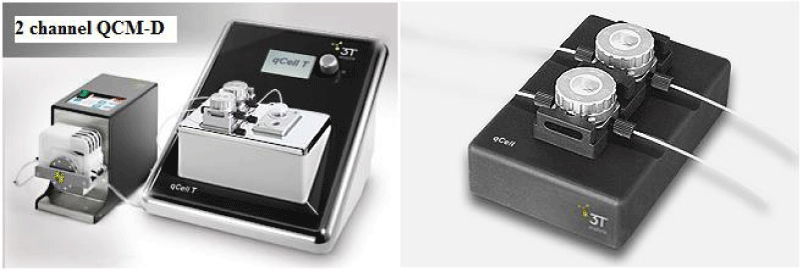Imprinting of Pharmaceuticals?
Munawar Hussain*, Hans P Wendel and Frank K Gehring
Biosensor Research Group, Thoracic, Cardiac and Vascular Surgery Department, Tuebingen University, Germany
*Address for Correspondence: Munawar Hussain, Biosensor Research Group, Thoracic, Cardiac and Vascular Surgery Department, Tuebingen University, Germany, Tel: +49-15-21-4654413; E-mail: [email protected]
Submitted: 28 July 2017; Approved: 03 August 2017; Published: 04 August 2017
Citation this article: Hussain M, Wendel HP, Gehring FK. Imprinting of Pharmaceuticals. Int J Pharma Anal Acta. 2017;1(1): 013-04.
Copyright: © 2017 Hussain M, et al. This is an open access article distributed under the Creative Commons Attribution License, which permits unrestricted use, distribution, and reproduction in any medium, provided the original work is properly cited
Download Fulltext PDF
Editorial
Molecular imprinting technology is promising for pharmaceutical applications for instance, separation, extraction, quantitative analysis, qualitative analysis, screening, delivery and targeting of medicines or their metabolites. The literature demonstrates similar or sometimes even higher selectivity on comparing with those of natural antibodies. Achieving selectivity is still challenging [1], because natural antibodies are generated in nature via “induced fit” mechanism along with the natural optimization of the analyte-receptor interaction [2].
The established platforms such as modern mass spectrometric techniques are flexible and offer astonishing sensitivities. Molecularly Imprinted Membranes (MIMs) - based biosensors are high selective and stabile on comparing to their counterparts [3]. MIMs based domain needs more research for its complete establishment at industrial levels [4,5].
Nanostructure approaches for instance Nanoparticles (NPs) are the focus of the scientific community these days. Nanostructures contribute to the improvements in the sensitivity and selectivity of the target drug. The research area is paving a path to industrial applications such as drug delivery systems [6,7].
Molecular imprinting techniques target the ruggedness and reusability of the biosensor material, while diagnostics, security or healthcare departments for instance illegal drugs biosensors focus on disposables. The diagnostic equipment market follows traditional techniques rather than novel technologies because of lack of expertise and knowledge. Molecular Imprinted Polymers (MIPs) are suitable for the applications for long-term stability in the cases of process or quality control and diagnostics department [8].
In chromatography, MIP-Chiral Stationary Phases (MIP-CSPs) are the successful area for general applications and MIP-CSPs are used in most chiral analysis techniques for drugs. For affinity separations especially in HPLC and Solid Phase Extraction (SPE), MIPs are better alternatives of traditional stationary phases. MIPs of structurally related analogues can be applied for ultra-trace analysis of the target drugs [9].
Soft contact lenses can provide better bioavailability of drugs and can enhance their residence time. MIPs can produce astonishing drug carriers for ophthalmic drug delivery [10]. Molecular imprints can be beneficial to target for delivering a drug to cancer cells by virtue of increasing the nuclear and cancer killing potency. This is usually achieved by localizing of a MIP on the immune system.
The acoustic techniques are the best choice for MIP technology, due to the cost-effective and unique properties. For instance, quartz crystal balance offers preeminent potential via [11] biomedical engineering, miniaturization and sensor arrays [12].
- Chaterji S, Kwon K and Park K. Smart Polymeric Gels: redefining the limits of biomedical devices. Prog Polym Sci. 2007; 32: 1083-1122. https://goo.gl/gvWvw8
- Lieberzeit PA and Dickert FL. Rapid bioanalysis with chemical sensors: novel strategies for devices and artificial recognition membranes. Anal Bioanal Chem. 2008; 391: 1629-39. https://goo.gl/jBtgMA
- Hussain M, Northoff H and Gehring FK. Detection of HIT antibody dependent platelet aggregation using novel surface imprinting approach. Talanta. 2016; 147: 1-7. https://goo.gl/yyt3X9
- Hussain M. Ultra-sensitive detection of heparin via a PTT using plastic antibodies on QCM-D technique. RSC Adv. 2015; 5: 54963-54970. https://goo.gl/T9oi4J
- Algieri C, Drioli E, Guzzo L and Donato L. Bio-mimetic sensors based on molecularly imprinted membranes. Sensors (Basel). 2014; 14: 13863-912. https://goo.gl/2FYPbL
- Hussain M, Iqbal N and Lieberzeit PA. Acidic and basic polymers for molecularly imprinted folic acid sensors-QCM studies with thin films and nanoparticles. Sens. Act. B. 2013; 176: 1090-1095. https://goo.gl/PVe1Z8
- Kotova K, Hussain M, Mustafa G and Lieberzeit PA. MIP sensors on the way to biotech applications: Targeting selectivity. Sens. Act. B. 2013; 189: 199-202. https://goo.gl/SFf5tX
- Hussain M, Wackerlig J and Lieberzeit PA. Biomimetic strategies for sensing biological species. Biosensors. 2013; 3: 89-107. https://goo.gl/bNrM74
- Vasapollo G, Sole RD, Mergola L, Lazzoi MR, Scardino A, Scorrano S, et al. Molecularly imprinted polymers: present and future prospective. Int J Mol Sci. 2011; 12: 5908-45. https://goo.gl/uo5Le2
- Hu X, Hao L, Wang H, Yang X, Zhang G, Wang G, et al. Hydrogel contact lens for extended delivery of ophthalmic drugs. J Polym Sci. 2011; https://goo.gl/Gc4YFy
- Hussain M. Molecular imprinting’ as multidisciplinary material science: Today and tomorrow. Int. J. Adv. Mater. Res. 2015; 1: 132-154. https://goo.gl/ZjBrBY
- Hussain M. QCM-D for haemostasis: Current status and future: a review. UK J Pharm Biosci. 2016; 4: 121-132. https://goo.gl/vmmu9c


Sign up for Article Alerts